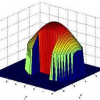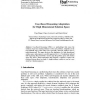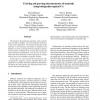193 search results - page 12 / 39 » Self-organising agent organisations |
ICPR
2000
IEEE
14 years 8 months ago
2000
IEEE
Directional features extracted from Gabor responses are used as primitives for perceptual grouping. In previous work, we extracted Gabor features in 8 directions and then applied ...
ICANN
2007
Springer
14 years 1 months ago
2007
Springer
The Self-Organising Map is a popular unsupervised neural network model which has been used successfully in various contexts for clustering data. Even though labelled data is not re...
ICCBR
2007
Springer
14 years 1 months ago
2007
Springer
Case-Based Reasoning (CBR) is a methodology that reuses the solutions of previous similar problems to solve new problems. Adaptation is the most difficult stage in the CBR cycle, e...
INCDM
2010
Springer
13 years 11 months ago
2010
Springer
This paper reports on a mechanism to identify temporal spatial trends in social networks. The trends of interest are defined in terms of the occurrence frequency of time stamped p...
EH
2004
IEEE
13 years 11 months ago
2004
IEEE
The properties of engineering structures, such as robotic arms, aircrafts or bridges, rely on the properties of the materials used to build them. The internal architecture of the ...



